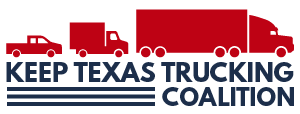Commercial Carrier Journal, March 13, 2020
By Matt Cole
This is the second of a two-part series on the growing trend of large court-ordered settlements in truck crash lawsuits.
In post-crash litigation in which juries order trucking companies to pay multi-million-dollar settlements, who actually foots the bill?
Mostly, it depends on the fleet, their size and their type of insurance.
Many larger fleets are self-insured up to a point, meaning they are on the hook for a certain amount of liability before their insurance company takes over. In the case of some of the largest trucking companies, they may be self-insured for $10 million, said attorney Charles Carr of the Birmingham-based law firm Allison Carr. If such fleets are hit with a verdict higher than $10 million, the trucking company would then have to payout $10 million before insurance comes in to pay the rest.
For smaller fleets that may just have $1 million in liability insurance coverage, which is common normal coverage amount (federal law requires a minimum of $750,000) the money owed in a verdict has to come from somewhere, Carr said.
“If there’s a $21 million verdict with only a $1 million policy, [the plaintiff’s] options are to either walk away and take the million and forget about the other $20 million or sue the insurance company that only offered $1 million for bad faith. Or if it’s a solid trucking company with trucks in their yard, send the sheriff in to seize those trucks and sell them,” Carr said.
Lee Parsley, general counsel for litigation reform group Texans for Lawsuit Reform, said the verdict amount announced from such cases isn’t always what gets paid out. In Texas, punitive damages, which are intended to punish the recipient on top of economic and non-economic damages, are capped based on a formula using economic and non-economic damages. That cap, however, is calculated post-trial.
“A jury is presented with the idea that a trucking company is rogue and needs to be punished, but in Texas, verdicts that have large punitive damage numbers won’t sustain into law,” he said. “After the verdict comes in, lawyers return to the courtroom, and the defense lawyer will say the damages are X and Y, so the punitive damages are capped at Z. We see a fair number of reductions in terms of judgements. There are no standards to punitive damages, and they can work purely off emotion. [Juries] think nothing of punishing companies for multi-millions of dollars.”
Mitigating chances of a verdict against your fleet
As noted in Part 1 of this series, the push for tort reform is in the works to try to reign in huge settlements against fleets. However, until any tort reform is accomplished, if ever, there are ways fleets protect themselves.
Annette Sandberg, CEO of TransSafe, said carriers should be sure to enforce all of existing safety policies and, at a minimum, enforce all regulatory requirements.
“Have processes on vetting and hiring drivers,” she said. “Some fleets might hire a driver and train them at the very beginning, and that’s the last time they’re trained. Have systems and processes in place for everything.”
Parsley said one thing he’s heard from trucking companies in Texas is that in-cab camera systems have helped protect them from liability.
Sandberg agreed, though fleets that adopt cameras also need to adopt processes for “how to enforce and use that tool,” she said. “You have to have a methodical process [on what to do with cameras]. What’s fireable, what’s egregious, what’s trainable?”
She also suggested that fleets work to get in front of the narrative post-crash.
“What you find with people on the defensive is they don’t talk to the press. I don’t know that that’s always a good strategy,” she said. “It doesn’t hurt to make it look like you’re aggressively investigating [an accident]. If you fire a driver, come out and say it. A lot of companies think they can hunker down and wait it out, but in this day and age, it never goes away. If your story isn’t out there, nobody’s going to hear it.”
Additionally, if you know your driver is at fault, “jump on it and deal with it early,” she said. “Don’t force them to take you to court.”
Carr said his firm has evaluated cases early to see if there is a chance a “case could ultimately become a nuclear verdict.”
If so, “we work really hard to resolve those kinds of cases early,” he said. “If you know what the value of [the case] is, and if your primary motivation is to get it settled within a few months after the accident occurred, you can do it. A lot of the industry doesn’t put the time and effort into doing that.”
